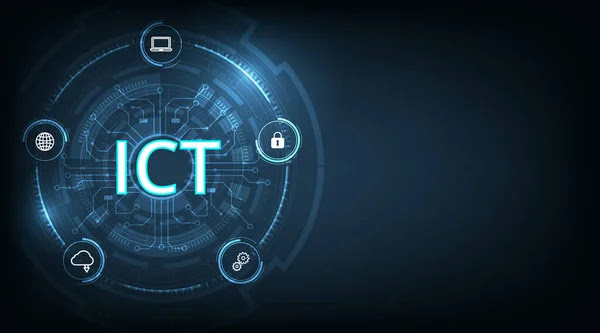
Introduction
The automotive landscape is undergoing a profound transformation, and at the heart of this evolution is the integration of technology into our vehicles. Beyond the convenience and entertainment features, technology is revolutionizing the insurance sector, particularly auto insurance. Telematics, the Internet of Things (IoT), and other technological advancements are reshaping how insurance is underwritten, priced, and experienced by consumers. In this comprehensive exploration, we'll delve into the impact of technology on auto insurance, unraveling the intricacies of connected cars and telematics and their role in shaping the future of the insurance industry.
The Genesis of Change: Technology Meets Auto Insurance
1. Telematics Unveiled:
Telematics is a portmanteau of telecommunications and informatics, representing the blending of these two fields to send, receive, and store information regarding remote objects, in this case, vehicles. At its core, telematics relies on a combination of GPS technology, onboard diagnostics, and communication systems to collect and transmit data related to driving behavior, vehicle health, and more.
2. The Internet of Things (IoT) in Auto Insurance:
The IoT expands the horizon of telematics, encompassing a network of interconnected devices embedded with sensors, software, and network connectivity. In the context of auto insurance, IoT-enabled devices in vehicles contribute to a wealth of real-time data, offering insurers unprecedented insights into driver habits, road conditions, and the overall performance of the insured vehicle.
Telematics: Transforming Auto Insurance
1. Data-Driven Insights:
- Driving Behavior Analysis: Telematics allows for a granular examination of how a vehicle is being driven. Factors such as speed, acceleration, braking patterns, and even the time of day the vehicle is in use become data points that insurers can analyze.
- Risk Profiling: The data generated by telematics facilitates the creation of personalized risk profiles for individual drivers. This shift from traditional demographic-based risk assessment to behavior-based risk assessment is a game-changer for the industry.
2. Pay-As-You-Drive (PAYD) and Pay-How-You-Drive (PHYD):
- PAYD Model: This model charges policyholders based on the number of miles they drive. It's particularly beneficial for individuals who don't use their vehicles frequently.
- PHYD Model: This model takes into account not just the distance but also the actual driving behavior. Safer driving habits are rewarded with lower premiums, creating a direct link between driving conduct and insurance costs.
3. Insurance Premiums and Cost Savings:
- Personalized Premiums: Telematics enables insurers to tailor premiums based on individual behavior, offering fairer and more personalized pricing.
- Accident Response and Claims Processing: In the event of an accident, telematics data can provide valuable insights into the circumstances, expediting claims processing and improving the accuracy of claim assessments.
The Future Landscape of Auto Insurance
1. Advancements in Autonomous Vehicles:
- Integration of Telematics in Autonomous Cars: As autonomous vehicles become more prevalent, telematics will play a pivotal role in monitoring and ensuring the safety of these self-driving cars.
- Transition in Insurance Models: The rise of autonomous vehicles may lead to a shift in the insurance paradigm, with a greater emphasis on manufacturer liability rather than individual driver responsibility.
2. Cybersecurity Challenges:
- Connected Car Vulnerabilities: The increasing connectivity of cars raises concerns about cybersecurity. Insurers will need to address the risks associated with potential cyber-attacks on connected vehicles.
- Emergence of Cyber Insurance: The integration of technology in vehicles may give rise to a new category of insurance – cyber insurance for automobiles – covering threats related to vehicle software and data security.
3. Consumer Adoption and Privacy Concerns:
- Consumer Acceptance: The success of telematics in auto insurance relies on consumer acceptance. Insurers must communicate the benefits clearly and address concerns about data privacy.
- Data Privacy Regulations: As the collection of vast amounts of personal driving data becomes more commonplace, adherence to data privacy regulations becomes paramount. Insurers will need robust policies to safeguard customer data.
Challenges and Opportunities
1. Challenges in Implementation:
- Technology Integration Costs: The initial costs of integrating telematics and IoT in vehicles can be significant. Insurers need to weigh these costs against the long-term benefits.
- Resistance to Change: Both insurers and consumers may face a learning curve in adapting to a data-driven insurance model. Education and effective communication are crucial in overcoming resistance.
2. Opportunities for Innovation:
- Product Customization: Telematics opens the door for highly customized insurance products, allowing insurers to cater to specific driver profiles and preferences.
- Enhanced Risk Management: The data-rich environment created by telematics enables insurers to enhance risk management strategies, leading to more accurate underwriting and pricing.
The Road Ahead: Navigating the Intersection of Tech and Insurance
In conclusion, the integration of technology into auto insurance, particularly through telematics and IoT, represents a seismic shift in the industry. From personalized premiums based on driving behavior to the potential transformation of insurance models in the age of autonomous vehicles, the future promises a dynamic landscape. As we navigate this intersection of technology and insurance, it is essential for insurers, regulators, and consumers to collaborate in establishing a framework that ensures fairness, transparency, and, above all, the protection of consumer privacy. The journey toward revolutionizing auto insurance has begun, and the road ahead is paved with possibilities, challenges, and the promise of a safer and more connected driving experience.

